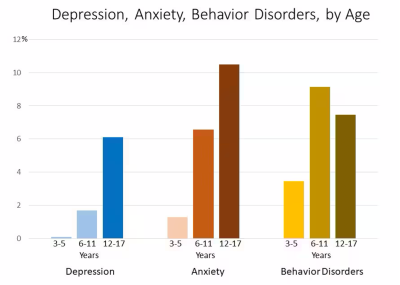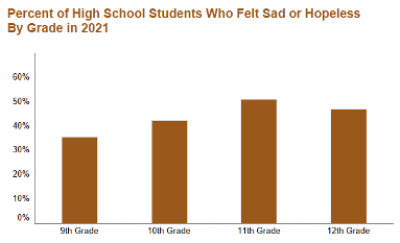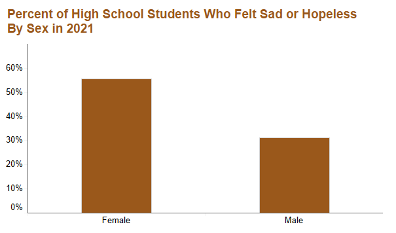The Community-Driven Approach to Combat Youth Violence in Barstow
The growing concern around youth violence in our country is now showing its ugly head here in Barstow. Across the nation, violence among young people is on the rise, affecting both poor and affluent communities. To better understand the issue, we talked to community leaders to get their perspectives on how youth violence is impacting Barstow, its root causes, and, most importantly, the solutions to the growing need to combat youth violence.
Voices From The Community
We sat down with Dr. Eva Bagg, Superintendent and President at Barstow Community College (BCC), who has herself been impacted by violence. Dr. Bagg emphasized that labeling our youth in Barstow as violent only perpetuates the cycle and makes things worse. She says, “It’s a dangerous stereotype that doesn’t account for the fact that youth violence is on the rise in many places." She goes on to say that what we are dealing with isn’t at its core a youth violence issue, but rather, youth violence is a symptom of a greater issue rooted in a mental health crisis that we are only beginning to understand.”
Dr. Christa Banton, a mental health counselor at BCC, agrees. She explains, “Violence is often a symptom of undiagnosed and untreated pain and trauma. These can stem from various reasons, but growing up in extreme poverty, backgrounds of abuse, and instability are significant factors.” Dr. Banton also highlights the role of social media and the 24/7 news cycle in exacerbating these issues. “Social media presents a distorted reality,” she says. “On one end, our youth are pounded with messages of desperation and despair, with threats of war, global warming, world-ending pandemics—basically, it’s ALL BAD. Then, on the other extreme, they are bombarded with Instagram and TikTok videos featuring perfect people living perfect lives. This distorted reality of cherry-picked truths invites our youth to measure themselves in harmful ways, creating more depression, anxiety, and eventually a sense of apathy and hopelessness.”
What The Data Tells Us About Youth Violence
CDC Children Mental Health Data
NCDHHA Child Behavioral Health Dashboard (images) data pulled from CDC Youth Risk Behavior Survey
Though youth violence spikes during the pandemic have since decreased, it still remains stubbornly high in many areas of the country. According to recent federal data from Youth.gov reports, “Youth violence is common, with 1 in 5 high school students reported being bullied.” It goes on to say that “Youth violence that results in homicide is the third leading cause of death for young people ages 10–24. Each day, approximately 12 young people are victims of homicide, and almost 1,400 are treated in emergency departments for nonfatal assault-related injuries.”
Many experts agree that the rise in youth violence stems from mental health issues. The Pew Research Center reports that seven in ten U.S. teens said anxiety and depression are major problems among people their age in the community where they live. A recent CDC survey reports that 44% of high-school students report feeling sad and hopeless. When accounting for gender, nearly 3 in 5 teen girls (57%) said they felt “persistently sad or hopeless.”
These startling trends have prompted experts to study what’s driving these changes. Though we don’t have a definitive answer, most experts agree that social media contributes to mental health issues in youth. So much so that the Surgeon General recently issued a new advisory about the effects of social media use and the impact it has on driving up anxiety, depression, and hopelessness in youth.
Bushawn Carpenter, a pastor and Executive Director at Reaching Our Kids here in Barstow, says it’s no surprise. He knows firsthand what hopelessness can do to a person. “When I grew up, I didn’t see a way out. I felt stuck, and I eventually lost hope. Without anything to look forward to, I became angry and full of rage. That led me to violence and eventually prison.”
“I see this same hopelessness in our youth. But what’s different now is that it isn’t just the kids living in the worst conditions like when I grew up. It’s all kids, even the ones who have more privilege and opportunity.”
For Bushawn, race, gender, and even zipcode can’t shield a child from the devastating spiral of losing hope. That’s why his non-profit organization, Reaching Our Kids, focuses on helping youth “walk into their dreams.” By bringing elements of their future into their present, Bushawn aims to show these young people that their dreams are within reach and that they have something to be hopeful for.
Reaching Our Kids offers practical support, such as scholarships for high school, mentorship, and experiential learning opportunities. Bushawn stresses the importance of showing rather than just telling. He believes that many kids, given their daily exposure to trauma and pain, need concrete examples and role models to envision a better future. By building a bridge to tomorrow through supportive and nurturing relationships with caring adults and an accountable peer group, he aims to insulate the youth from negative influences. This constant and vigilant support system helps reinforce their connection to a positive future, even as they return to challenging environments.
Dr. Banton echoes this sentiment, saying, "Healing trauma and pain often begins with a single positive relationship.” For Dr. Banton, caring and supportive relationships create the space and grace to share, connect, and build trust. Having these supportive relationships can mean the difference from spiraling out of control to developing healthy coping mechanisms and strategies to grapple with life challenges.
Beyond supportive relationships, Dr. Banton also advocates for creating environments that nurture and support rather than punish. These “safe spaces,” like the Mindful Space at BCC, give people an outlet and safe refuge to unpack, unburden, and grapple with challenges. “Given our kids spend much of their early lives in school, it’s important for our educational institutions to create these types of spaces and relationships to nurture and support our youth.”
Creating Safe Spaces In Our Schools
Superintendent of Barstow Unified School District, Deanna Swearingen, knows firsthand how violence and the rise of disciplinary issues impact schools. “BUSD has seen the rise of violence and the need for disciplinary action; it’s cause for concern and something we are working to resolve.” When asked about the causes, Swearingen points to absenteeism, literacy challenges, and troubled home environments as significant factors contributing to the rise in youth violence.
As Swearingen dove into each issue, she explained how each one makes the next one even worse. “When students miss school, they fall further behind, causing educational gaps, the biggest of which is literacy.” Barstow Unified School District has an ADA (average daily attendance) of 89%, meaning many students miss over 10% of scheduled school days. This level of absenteeism compounds year over year, meaning that students fall chronically behind.
According to Superintendent Swearingen, a chronically behind student who can’t read often means you have a student likely to act out and face disciplinary action. Over time, issues frequently escalate and result in expulsion, which means missing even more school. “It's a vicious cycle," says Swearingen.
So we asked, “What can we do about it?” Swearingen emphasizes, “Building relationships with students is key. With a caring, supportive, and nurturing relationship, we can reach, teach, and support our students. Relationship building with our students is foundational to their success.”
We asked how relationship-building with students is going at BUSD. Superintendent Swearingen says, "Better than it has, but we have a teacher shortage that makes this incredibly difficult. So, we are innovating and finding ways to bridge the gap. We're getting ready to deploy virtual teachers through programs like Fullmind Learning, which helps bring qualified educators remotely to support our students. Additionally, we are working on better recruiting, seeking out funding, and collaborating with BCC to help address the teacher shortage.”
When asked about collaboration with BUSD and helping with the teacher shortage, Dr Bagg emphasized BCC’s commitment to supporting Barstow through innovative and collaborative approaches. “At BCC, we launched our Mindful Space, run by Dr. Banton, two years ago and have served hundreds of students. We are aggressively pursuing funding to invest in solutions for Barstow, and I'm happy to say it's paying off. BCC was recently awarded a $1M Inland Empire Regional K-16 Education Collaborative grant to help build a local home-grown teacher pipeline. The grant will help address the critical need for more teachers in Barstow and help bridge the gap that Deanna speaks of for building supportive relationships with our kids."
Vision of Hope For Barstow
Despite the challenges, many believe in a better and brighter future for our community. Dr. Banton hopes to implement further programming to transform the narrative from despair to hope and possibility. Superintendent Swearingen aims to make Barstow Unified School District one of the highest-achieving districts in the High Desert (more on this in future updates). Carpenter’s mission with Reaching Our Kids is to create a network of care that reinforces a positive future for our youth.
Dr. Bagg sums it up by saying, "If hopelessness is the cause and supportive relationships are the solution, I believe that Barstow is especially well-positioned to lead the charge in turning the tide. Our smallness is our advantage. We can wrap our youth in the community, neighborhood, and fellowship in a way that only a small town can. So stay encouraged and engaged because each hand that reaches out to support our youth makes all the difference in the world."
We invite community members to join BCC and Barstow Unified School District in open forums to discuss the issue of youth violence. We want to hear from you, share your stories, and learn how to better support you.
To join the movement on combatting youth violence in Barstow, use the form below to subscribe to updates for upcoming events, resources, and announcements.






